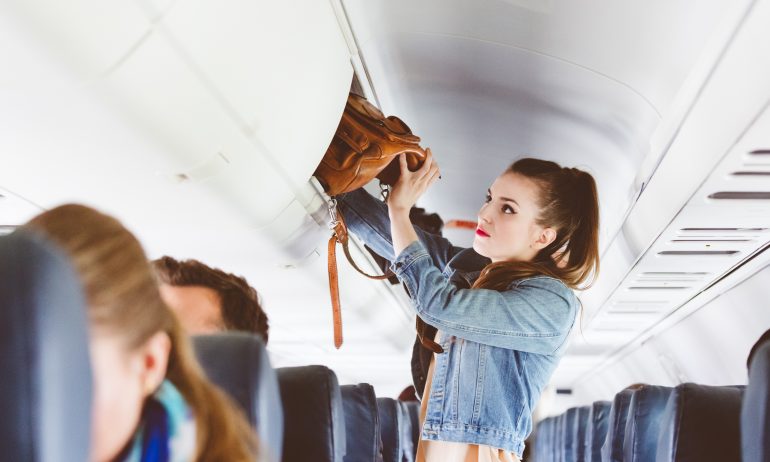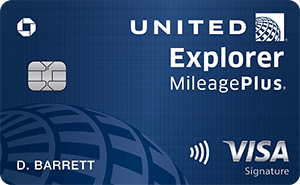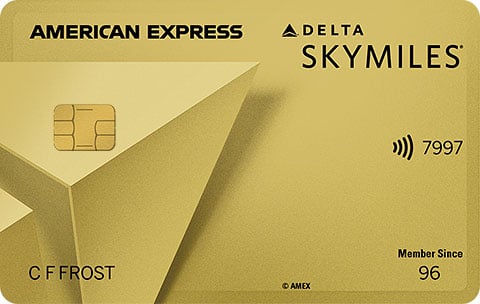How to Get Started With Frequent Flyer Programs

Many or all of the products featured here are from our partners who compensate us. This influences which products we write about and where and how the product appears on a page. However, this does not influence our evaluations. Our opinions are our own. Here is a list of our partners and here's how we make money.
Frequent flyer programs can seem enticing for the thrill of earning free flights to exotic destinations. But they can also be bewildering, given the intricate airline rules for collecting and redeeming miles.
Is learning about frequent flyer programs worth your time and effort? The answer, of course, depends on you. If you’re just starting to learn about these programs, here’s what you need to know.
Should you bother with airline rewards?
All major U.S. airlines operate loyalty programs. The basic premise is that if you spend your money with one airline, it will give you miles or points to redeem for free flights, better seats and preferential treatment. The term "miles" doesn’t refer to a distance you’ve flown or can fly for free; it’s just what some airlines call the rewards currency.
Answer two primary questions when deciding whether to bother with airline programs:
Should I sign up?
In short, yes. These programs are free and easy to sign up for. And despite the general term "frequent flyer," you don't need to be one. You can sign up online while booking your first flight. Then, enter your frequent flyer number when you buy tickets so that you'll earn reward miles or points. Maybe you’ll earn enough rewards to redeem; maybe not. You won’t get any better upfront ticket prices just because you’re a member, though.
Should I put effort into the program?
This question depends on whether you’ll be loyal to an airline, or maybe two or three airlines, if you fly often. Your answer may come down to two factors:
Where do you live? Do you have a choice of multiple airlines at your nearest airports? If you do, some experts would argue that you should mostly disregard frequent flyer programs. You might get more value by playing the field and simply booking the airline that offers the best flights and prices. In other words, the frequent flyer program — regardless of whether you belong to it — wouldn’t be a consideration when buying airfare.
But if one airline dominates your only nearby airport, then racking up loyalty rewards with a single airline — and spending them — will be easier because you have little choice.
How often do you fly? If you fly mostly one airline and fly often, you’re a prime candidate to get value from a frequent flyer program.
If you don't, the decision is murkier.
Ticket prices will vary considerably, but a typical decent deal on domestic airfare costs 12,500 miles or points each way, or 25,000 round trip. You can earn frequent flyer miles in several ways, including through an airline credit card. But if you don’t fly at least a few times a year, it may be difficult to earn enough miles to redeem for free flights, especially because your miles may expire after a period of inactivity.
Also be aware that award seats might not be available for the flight you want. With many of the largest airlines, you can’t just choose any available seat on any flight like you can when paying cash. There has to be a seat available that the airline has designated as one that can be paid for with miles. (Southwest Airlines is an exception, basically allowing you to book any available seat.)
What’s in it for you?
The primary reasons to join a frequent flyer program are to earn:
Free flights
Seat upgrades
Elite status
As you think about what you’re looking to get out of the program, consider your goals. A typical decision for frequent flyer members is whether to use miles on luxury rides or more trips. For example, flying business class may cost as many points as two trips in economy class.
How to get started
Here are names and reviews of frequent flyer programs for a few of the major airlines:
American Airlines: AAdvantage
Delta Air Lines: SkyMiles
United Airlines: MileagePlus
Southwest Airlines: Rapid Rewards
If you’re not sure which airlines have a big presence near you, check market share for any U.S. airport at the Bureau of Transportation Statistics.
After signing up online for your airline’s program, be sure your frequent flyer number is included on your online reservation so you earn rewards.
Optional: Get an airline credit card?
If you want to fly first class to a far-off destination using reward miles alone, getting an airline credit card is among the best ways to do it. Here’s what to consider with co-branded airline credit cards.
Pros
Earning a card’s sign-up bonus, usually after spending a few thousand dollars on the card, might provide you enough miles for a free domestic flight quickly after getting the card. That’s in addition to miles you earn from ongoing spending with the card. And airlines often give card members free checked bags, which can be a value of $35 each way for you and others on your reservation, depending on the card. As a cardholder on many airlines, you’ll get to board earlier, meaning overhead bins will likely have room left for your carry-on. In some cases, your accumulated frequent flyer miles don’t expire if you have the airline card, meaning you can take more time to earn enough miles for freebies.
Cons
Airline cards often require you to have good or excellent credit for approval. They usually come with annual fees, many near $100. The question is whether the card offers enough value to justify the fee. And airline cards typically carry high interest rates, so you'll want to pay your credit card bill in full every month. Another disadvantage is an airline card will have its own features and rules, aside from the airline's frequent flyer program, adding a layer of complexity.
$0 intro for the first year, then $95.
$69.
$0 intro for the first year, then $150.
• 2 miles per $1 on United purchases.
• 2 miles per $1 at restaurants and hotels (when booked directly with hotel).
• 1 mile per $1 on all other purchases.
• 2 points per $1 on Southwest purchases.
• 2 points per $1 on Rapid Rewards hotel and car rental partner purchases, local transit and commuting (including rideshare), and on internet, cable, phone services and select streaming.
• 1 point per $1 on all other purchases.
• 2 miles per $1 on purchases made directly with Delta and at U.S. supermarkets and restaurants (including takeout and delivery in the U.S.).
• 1 mile per $1 on all other eligible purchases.
Terms apply.
If you aren’t loyal to a single airline but still want free flights, you might consider a general travel credit card instead, which provides travel rewards without tying you to a single airline. Some of these cards allow you to use points to essentially erase travel expenditures you already made, making a flight free, for example. Others issue rewards points for use at their own travel-booking websites or to transfer into airline or hotel loyalty programs.
Optimize your miles
The key to using frequent flyer programs well is accumulating miles efficiently and redeeming them to your best advantage, sometimes called "earn and burn."
Earn
The basic way to rack up miles is by flying the airline. Although rewards are sometimes called miles, nowadays you typically earn rewards based on how much money you spend, not how far you fly. In a simplified example, you might earn 5 miles per dollar spent on airfare. A $500 round-trip flight earns you 2,500 miles. You would have to pay for that type of flight 10 times to earn enough for a free round-trip flight costing 25,000 miles. At that rate, it's like a retailer deal: "Buy 10, get one free."
Other ways to earn:
Applying for a new card and earning a sign-up bonus is a way to quickly accumulate miles. If you already have an airline credit card, maximize spending on it. You might use it for recurring bills, for example. But don’t use airline miles as an excuse to overspend or not pay your credit card bill in full.
Book with the airline’s hotel and rental car partners
Shop your credit card or airline bonus malls
Join your airline’s dining rewards program
Fly partner airlines
Gain elite status. If you get to an elite frequent flyer level, you’ll often earn miles at an accelerated rate when you fly. (More on that later.)
If you don't have enough rewards to cover a flight, you can buy points or miles from the airline, but this is almost always a bad deal because they cost more than they’re worth, on average.
Burn
Spending your miles wisely means getting good value. Airline miles or points are typically worth around a penny each, according to NerdWallet values. At that rate, you would be getting fair value using 40,000 miles to buy a flight that had a base fare of $400. If you can book that $400 flight for 25,000 miles, that’s a good use of miles (1.6 cents per mile). For simplicity at the penny-per-mile valuation, chop off two zeros from the number of miles required. That’s at least how much the flight should cost in cash.
For your airline’s program, know how miles and points are valued. Airlines can change the value of your points by requiring more or fewer for a free flight or changing the number of award seats available.
POPULAR WAYS to burn
1. Free flights: Use your airline’s booking website to see what a particular flight will cost if you pay with reward miles or points vs. cash. Some airlines publish an awards chart detailing the maximum number of points or miles you’ll need for a given flight.
Your airline program may offer several levels of award seats, requiring more miles for more desirable flight times, seats and cabins. They are often awarded as one-way flights, so if you’re spending miles, you’ll have to apply miles to both the outbound and return flights separately.
Note that if you pay for a flight with airline miles, you typically don’t earn rewards for that flight.
You can also redeem miles on partner airlines. For example, if you have United Airlines miles, you can use them to book a ticket on German carrier Lufthansa, a partner in the Star Alliance.
You can’t use miles through online travel agencies, such as Expedia or Priceline.
Redeeming airline miles for a "free" flight might not be completely free. For example, on a domestic flight you might have to pay a typical nominal amount of $5.60 each way, usually labeled as taxes and fees. Those same costs (and sometimes fuel surcharges, too) on international flights could cost hundreds of dollars out of pocket. You might also pay a "close-in" fee for booking award flights within a few weeks of departure.
2. Upgrades: Upgrading your seat to a premium class can be another good use of miles. Some upgrades to business or first class require payment in the form of a cash co-pay as well as miles. As with award seats, upgrades are based on one-way flights. Upgrade prices may also be available in the airline’s award chart.
3. Other travel expenses: Redemption options might include airport lounge membership fees, hotel stays, car rentals, cruises and gift cards. These options tend to offer a lower value than points or miles are worth, so we recommend avoiding them.
To earn and burn effectively, you’ll have to become familiar with details of your airline’s program. Each airline has extensive information on its website. You can also refer to NerdWallet's reviews of major airline frequent flyer programs.
Expert level: Earn elite status
Achieving airline elite status — which may be called silver, gold, platinum or similar — requires a lot of effort and money. It’s typically based on how far and often you fly with the airline and how much you spend.
Think of it as a program within the general frequent flyer program that occasional flyers can just ignore. Even if you fly often, consider whether it’s worth trying to achieve elite status. Some of the best traditional perks of being an elite flyer — free checked bags, earlier boarding and better access to award seats — may be available to airline credit card holders for the relatively minor cost of their card’s annual fee, depending on the card and carrier.
What you get
With elite statuses, you might qualify for earning more award miles when you fly, seat upgrades, priority check-in, complimentary checked baggage, better award-seat availability, discounted and waived fees, and other benefits.
How you earn it
The math to earn elite statuses can be confusing, but basically, you need to do things the airline cares about as a business: fly often, fly far and spend money.
With United Airlines, for example, to achieve its lowest-tier status called Premier Silver, you would need to spend at least $3,000 in a year and fly 25,000 miles or 30 segments. (A segment is a trip between a city pair under the same flight number and with the same plane. It could include a stop and still be a single segment.) You get a boost to your miles and segments if you buy pricier fares, like a full-fare economy instead of discount economy.
The airline will track all that math and display it in your frequent flyer online account. If you earn elite status, it typically lasts at least a year.
Ultimately, airline programs differ so much in earning and redeeming miles — and achieving elite status — that you’ll have to learn the rules of the particular programs you choose to join.
Overall, whether a frequent flyer program is worth your time and effort depends on whether you can be loyal enough to an airline to get more value out of it than you put in.
Additional resources
How to maximize your rewards
You want a travel credit card that prioritizes what’s important to you. Here are our picks for the best travel credit cards of 2024, including those best for:
Flexibility, point transfers and a large bonus: Chase Sapphire Preferred® Card
No annual fee: Bank of America® Travel Rewards credit card
Flat-rate travel rewards: Capital One Venture Rewards Credit Card
Bonus travel rewards and high-end perks: Chase Sapphire Reserve®
Luxury perks: The Platinum Card® from American Express
Business travelers: Ink Business Preferred® Credit Card
on Chase's website
1x-5x
Points60,000
Pointson Chase's website
1.5%-6.5%
Cashback$300
2x-5x
Miles75,000
Miles







